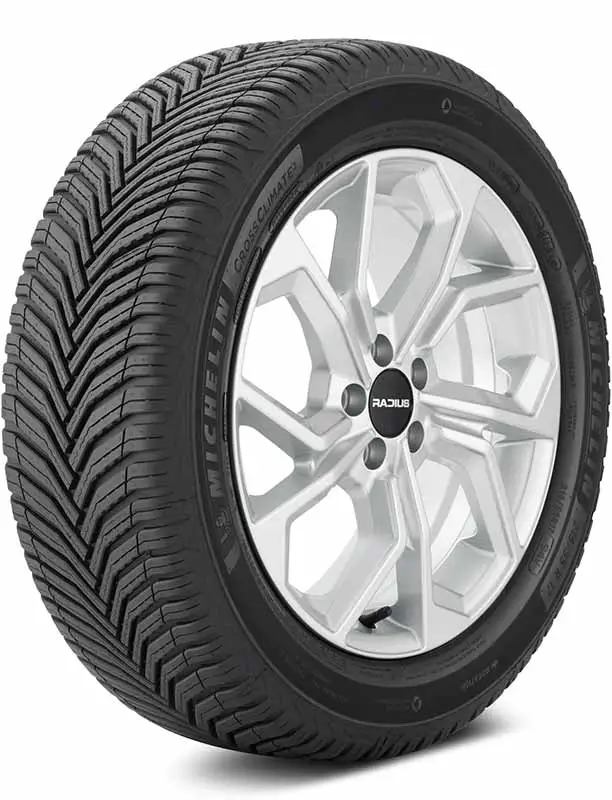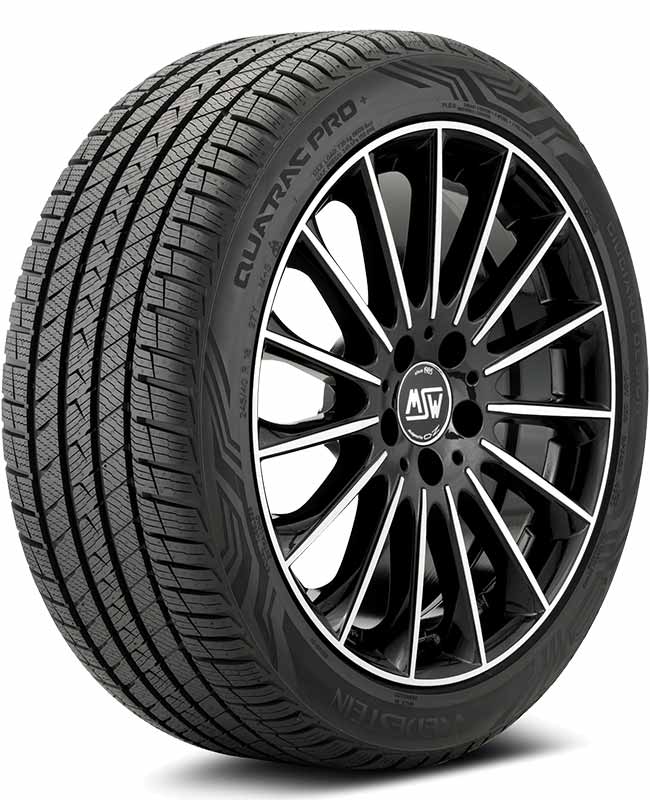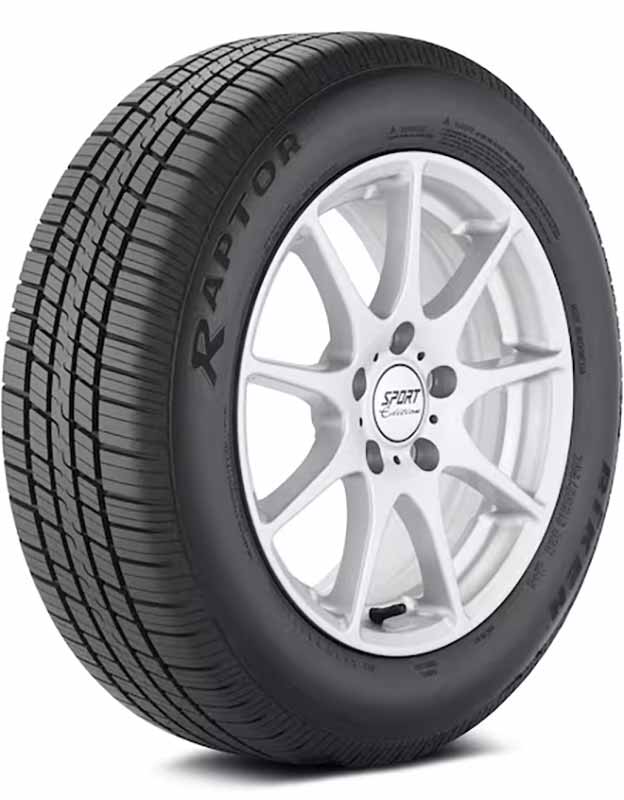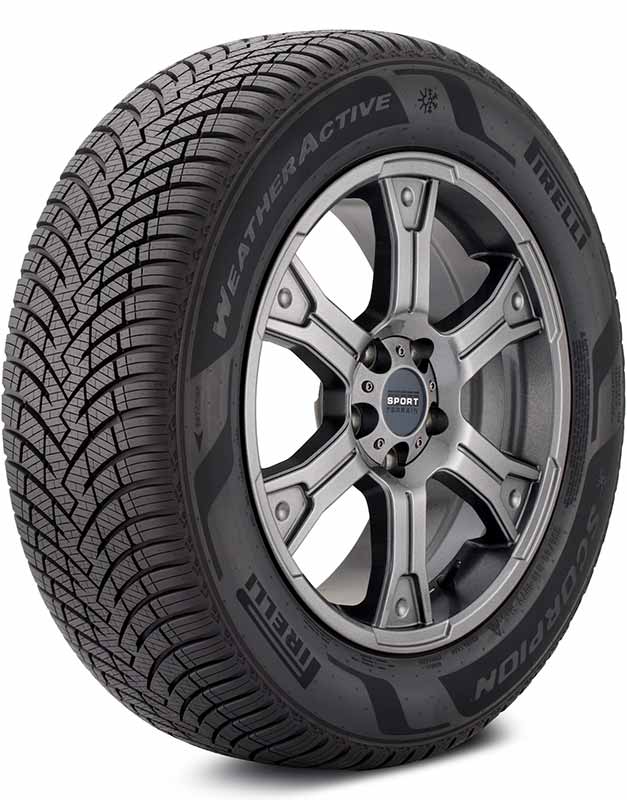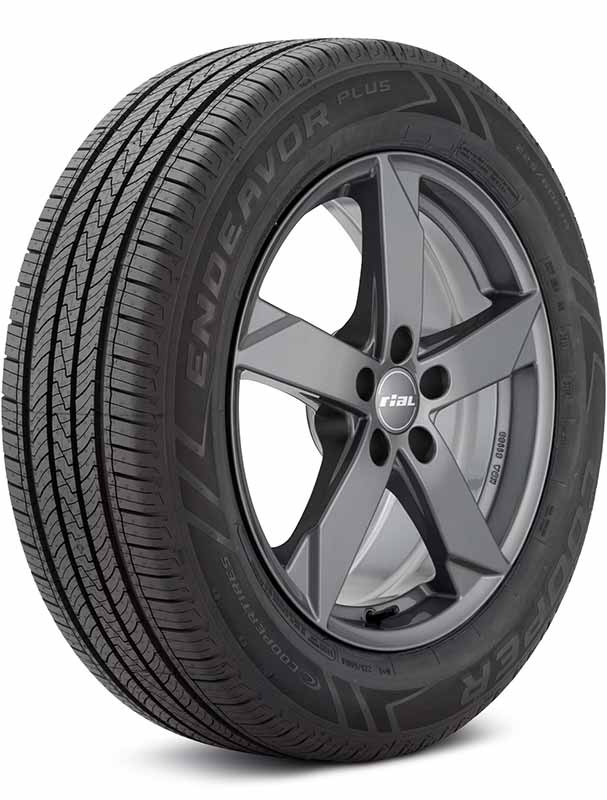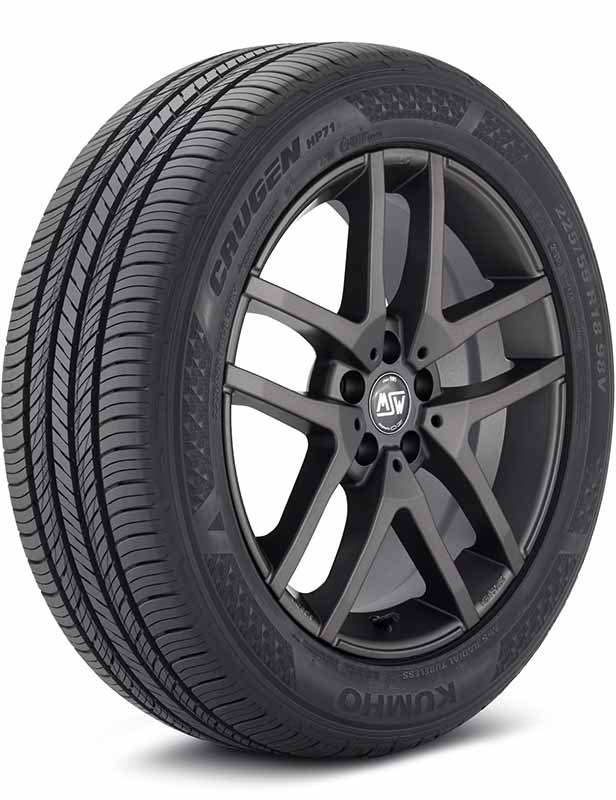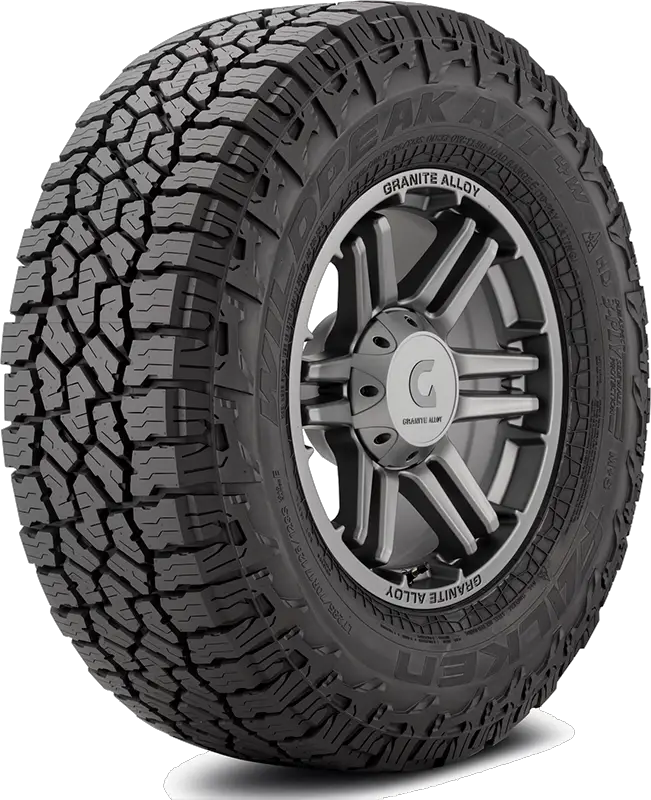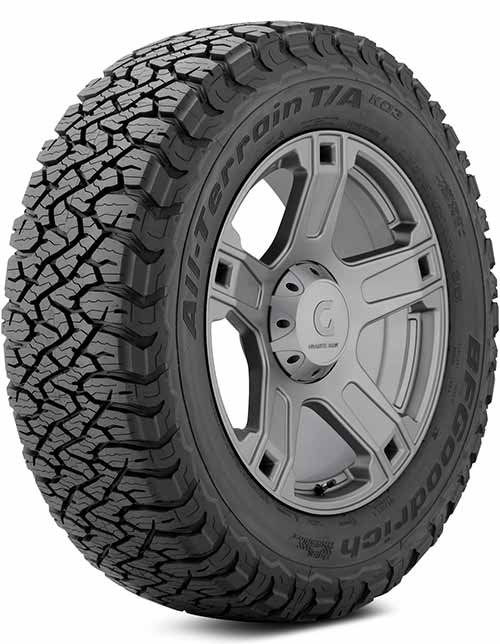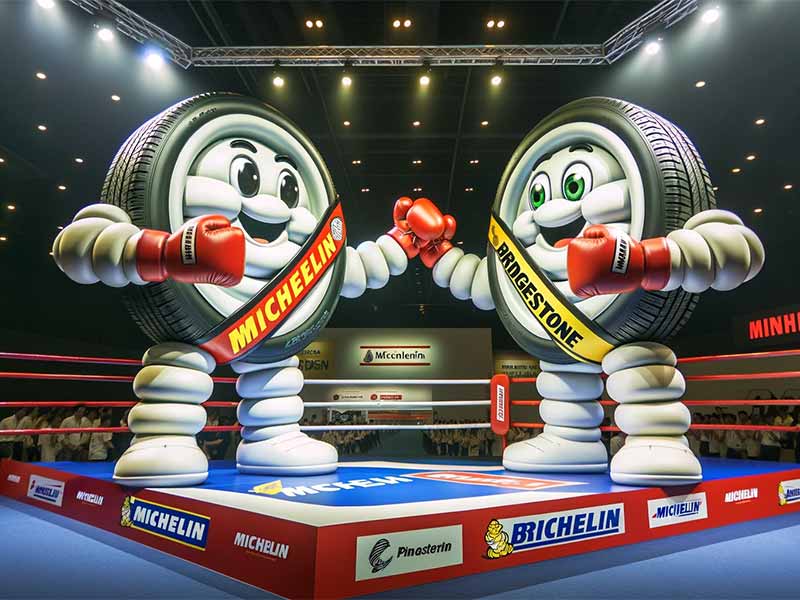Tires can make or break your driving experience, especially when you’re facing everything from sudden rainstorms to early winter flurries. If you’re tired of juggling separate sets for summer and colder seasons, all-weather tires can be your perfect solution. Whether you commute daily on busy freeways or take weekend trips through unpredictable weather, the right choice will keep you safe and confident on the road.
Our top all-weather tires for 2025 come in two groups, each featuring three outstanding picks chosen for their balance of grip, comfort, and durability:
- Sedan/Small to Midsize SUVs:
- Premium: Michelin CrossClimate2
- Average: Vredestein Quatrac Pro+
- Budget: Riken Raptor HR
- Large Crossover/SUVs:
- Premium: Pirelli Scorpion WeatherActive
- Average: Cooper Endeavor Plus
- Budget: Kumho Crugen HP71
We singled out these tires for their proven track records in wet, dry, and light snow conditions, ensuring drivers get reliable handling and a comfortable ride without sacrificing long-term tread life.
In this article, you’ll find a detailed side-by-side comparison of these six all-weather standouts, as well as in-depth performance stats and expert insights. By the end, you’ll be ready to choose the perfect set of tires to match your driving style and weather needs.
Side-By-Side Comparison
Sedan/Small to Midsize SUVs
Price Comparison
| Tire | Price Category |
|---|---|
| Michelin CrossClimate2 | Premium |
| Vredestein Quatrac Pro+ | Average |
| Riken Raptor HR | Budget |
Wet Performance
| Tire | Hydroplaning Resistance | Wet Traction |
|---|---|---|
| Michelin CrossClimate2 | 9.4 | 9.4 |
| Vredestein Quatrac Pro+ | 9.4 | 9.3 |
| Riken Raptor HR | 8.3 | 8.4 |
Dry Performance
| Tire | Corner Stability | Dry Traction | Steering Response |
|---|---|---|---|
| Michelin CrossClimate2 | 9.4 | 9.5 | 9.3 |
| Vredestein Quatrac Pro+ | 9.3 | 9.4 | 9.4 |
| Riken Raptor HR | 8.9 | 9.1 | 9.0 |
Winter/Snow Performance
| Tire | Light Snow Traction | Deep Snow Traction | Ice Traction |
|---|---|---|---|
| Michelin CrossClimate2 | 9.2 | 8.8 | 8.5 |
| Vredestein Quatrac Pro+ | 9.4 | 9.1 | 8.9 |
| Riken Raptor HR | 7.6 | 7.1 | 6.5 |
Comfort Performance
| Tire | Ride Quality | Noise |
|---|---|---|
| Michelin CrossClimate2 | 9.2 | 8.6 |
| Vredestein Quatrac Pro+ | 9.2 | 9.1 |
| Riken Raptor HR | 8.7 | 8.4 |
Treadwear Performance
| Tire | Treadwear |
|---|---|
| Michelin CrossClimate2 | 9.1 |
| Vredestein Quatrac Pro+ | 9.1 |
| Riken Raptor HR | 8.6 |
Large Crossover/SUV Tires
Price Comparison
| Tire | Price Category |
|---|---|
| Pirelli Scorpion WeatherActive | Premium |
| Cooper Endeavor Plus | Average |
| Kumho Crugen HP71 | Budget |
Wet Performance
| Tire | Hydroplaning Resistance | Wet Traction |
|---|---|---|
| Pirelli Scorpion WeatherActive | 9.4 | 9.4 |
| Cooper Endeavor Plus | 8.9 | 8.9 |
| Kumho Crugen HP71 | 8.3 | 8.4 |
Dry Performance
| Tire | Corner Stability | Dry Traction | Steering Response |
|---|---|---|---|
| Pirelli Scorpion WeatherActive | 9.5 | 9.6 | 9.4 |
| Cooper Endeavor Plus | 9.2 | 9.3 | 9.2 |
| Kumho Crugen HP71 | 8.8 | 9.0 | 8.8 |
Winter/Snow Performance
| Tire | Light Snow Traction | Deep Snow Traction | Ice Traction |
|---|---|---|---|
| Pirelli Scorpion WeatherActive | 9.3 | 8.9 | 8.7 |
| Cooper Endeavor Plus | 8.3 | 7.9 | 7.4 |
| Kumho Crugen HP71 | 7.7 | 7.2 | 6.7 |
Comfort Performance
| Tire | Ride Quality | Noise |
|---|---|---|
| Pirelli Scorpion WeatherActive | 9.2 | 9.0 |
| Cooper Endeavor Plus | 8.9 | 8.6 |
| Kumho Crugen HP71 | 8.6 | 8.3 |
Treadwear Performance
| Tire | Treadwear |
|---|---|
| Pirelli Scorpion WeatherActive | 9.0 |
| Cooper Endeavor Plus | 8.8 |
| Kumho Crugen HP71 | 7.7 |
Grand Touring vs Crossover/SUV Touring
Grand Touring All-Season tires are typically designed for sedans, coupes, and small to medium sized crossovers or SUVs. They focus on a smooth, quiet ride, balanced handling, and decent tread life. These tires are made to handle a wide range of weather conditions—like light snow and rain—while still keeping comfort and fuel economy in mind.
Crossover/SUV Touring All-Season tires are built to support heavier vehicles like larger SUVs and crossovers, which need extra strength to bear the added weight. These tires often have sturdier sidewalls and deeper tread patterns for better traction and load capacity. Although they share many similarities with grand touring tires—such as quiet operation and a comfortable ride—their construction is geared toward the demands of larger, more capable vehicles.
Michelin CrossClimate 2
Customer Rating
Overall Rating
9.0 of 10
Wet Weather
9.2 of 10
Winter Weather
8.3 of 10
Treadwear
9.0 of 10
Dry Weather
9.4 of 10
Ride Comfort
8.8 of 10
UTQG
Uniform Tire Quality Grade
UTQG Treadwear Rating: 640
UTQG Traction Rating: B
UTQG Temperature Rating: A
Mileage Warranty
6 Years / 60,000 Miles
Find The Best Price
Key Performance Metrics
Hydroplaning: 9.0 of 10
Wet Grip: 9.2 of 10
Cornering: 9.2 of 10
Dry Grip: 9.4 of 10
Responsiveness: 9.0 of 10
Mild Snow Grip: 8.3 of 10
Heavy Snow Grip: 7.6 of 10
Ice Grip: 7.4 of 10
Comfort Level: 8.9 of 10
Road Noise: 8.8 of 10
The Michelin CrossClimate2 stands at the pinnacle of the all‐weather grand touring category, excelling across varying road and climate conditions. It competes against strong contenders like the Vredestein Quatrac Pro+ and Riken Raptor HR, yet establishes its leadership with superior wet and dry traction, class‐leading winter capabilities, and exceptional treadwear longevity. Designed for a variety of sedans, coupes, and even some smaller SUVs, this premium‐tier tire caters to drivers seeking top performance and reliability, particularly in areas with frequent or unpredictable weather shifts.
Performance Breakdown
In wet conditions, the CrossClimate2’s hydroplaning resistance and wet traction set a benchmark. While the Vredestein Quatrac Pro+ also delivers outstanding wet performance, the Michelin’s design promotes more immediate water evacuation, helping it maintain composure at highway speeds during heavy rainfall. By contrast, the Riken Raptor HR, though impressive for its budget class, cannot fully match Michelin’s advanced wet‐weather grip.
Dry pavement is another strong suit for the CrossClimate2, showcasing crisp corner stability, solid straight‐line traction, and refined steering response. The Vredestein Quatrac Pro+ remains remarkably close in responsiveness, but the Michelin’s construction—particularly its tread compound—offers a slight edge, especially at higher speeds or in tight cornering situations. Meanwhile, the Riken again proves competent but aimed more toward cost‐effectiveness than outright handling prowess.
For winter performance, Michelin’s unique tread pattern and compound design excel in light snow, slush, and even moderate ice coverage. Although the Quatrac Pro+ also garners praise for its winter reliability, the CrossClimate2 consistently provides superior traction and braking in harsher conditions. Drivers in regions prone to heavy snowfall will appreciate the Michelin’s readiness, while the Riken, commendable for moderate winters, clearly trails both premium competitors when faced with deeper snow or ice.
Comfort & Durability
Michelin’s focus on ride refinement is evident as the CrossClimate2 manages road irregularities and dampens vibration with ease, retaining low cabin noise. This closely mirrors the Vredestein Quatrac Pro+, renowned for comfort in its own right, but the Michelin edges it out in overall isolation from harsh impacts. The Riken Raptor HR offers a surprisingly comfortable drive for a budget option but can transmit slightly more pavement texture and ambient road noise compared to the more premium tires.
Durability and tread life are major selling points of the CrossClimate2. Many users report consistent performance over tens of thousands of miles—an area where the Riken, with its lower‐cost formulation, may begin to fade more quickly. The Vredestein Quatrac Pro+ upholds a solid reputation for tread longevity, though it commonly falls just a step behind Michelin’s best‐in‐class wear characteristics.
Comparative Analysis
Wet Performance: All three handle rain well for their segments, but the CrossClimate2 edges slightly ahead overall, followed closely by the Quatrac Pro+.
Dry Performance: Michelin delivers swift steering response and excellent cornering, just marginally outdoing Vredestein. Riken, while capable, targets a more value‐oriented tier.
Winter Performance: The CrossClimate2 leads, especially on ice, with the Quatrac Pro+ remaining a commendable second. Riken offers an adequate, though less robust, solution for occasional snowfalls.
Comfort and Noise: CrossClimate2 maintains a premium ride feel; Vredestein is close behind, while Riken’s comfort is good but not as polished.
Treadwear: Michelin exhibits top endurance, Quatrac Pro+ remains strong but slightly below that bar, and Riken has decent longevity for its price.
Value Analysis
From a cost‐to‐performance standpoint, the Michelin CrossClimate2 is undeniably a premium investment. You pay more initially, but you receive unparalleled wet and winter traction, best‐in‐class tread life, and a notably smooth, quiet ride. The Vredestein Quatrac Pro+comes in at a lower price point while delivering performance that challenges the Michelin in nearly every category—an excellent mid‐range choice. For budget‐minded drivers, the Riken Raptor HR provides satisfactory performance at a significantly lower cost, though it lags in extreme weather and longevity compared to the other two.
Pros
- Top‐tier wet and dry grip
- Impressive winter traction for an all‐weather design
- Remarkable treadwear longevity
- Quiet, comfortable ride
Cons
- Priced at the upper end of the market
- Marginal gains over Quatrac Pro+ come at a premium cost
- Outperforms but can overshadow less expensive options like the Riken
Bottom Line
The Michelin CrossClimate2 epitomizes what a premium all‐weather grand touring tire can be: refined, adaptable, and durable under almost any driving scenario. While the Vredestein Quatrac Pro+ narrows the gap at a lower price point, and the Riken Raptor HRappeals to more budget‐oriented shoppers, Michelin’s engineering and reliability justify its higher cost. If you prioritize maximum safety, comfort, and seasonal versatility—and can accommodate the premium price—this tire remains the benchmark in its category.
Vredestein Quatrac Pro+
Customer Rating
Overall Rating
9.2 of 10
Wet Weather
9.4 of 10
Winter Weather
9.1 of 10
All Terrain
N/A
Tread Wear
9.1 of 10
Dry Weather
9.3 of 10
Ride Comfort
9.1 of 10
UTQG
Uniform Tire Quality Grade
UTQG Treadwear Rating: 400
UTQG Traction Rating: A
UTQG Temperature Rating: A
Available Sizes
17
205/40R17
84W
205/45R17
88Y
205/50R17
93Y
205/55R17
95V
215/40R17
87Y
215/45R17
91Y
215/50R17
95W
215/55R17
98W
215/60R17
100V
215/65R17
103V
225/45R17
94Y
225/50R17
98Y
225/55R17
101W
225/60R17
103V
225/65R17
106V
235/45R17
97Y
235/55R17
103Y
235/60R17
106V
235/65R17
108W
245/45R17
99Y
245/65R17
111V
255/60R17
106V
265/65R17
116H
275/55R17
109V
18
215/40R18
89Y
215/45R18
93Y
215/50R18
92W
215/55R18
99V
225/40R18
92Y
225/45R18
95Y
225/50R18
99W
225/55R18
102V
225/60R18
104W
235/40R18
95Y
235/45R18
98Y
235/50R18
101V
235/55R18
104V
235/60R18
107W
235/65R18
110V
245/35R18
92Y
245/40R18
97Y
245/45R18
100Y
255/35R18
94Y
255/45R18
103Y
255/55R18
109W
255/60R18
112V
265/60R18
114V
19
225/35R19
88Y
225/40R19
93Y
225/45R19
96W
225/55R19
103W
235/35R19
91Y
235/40R19
96Y
235/45R19
99Y
235/50R19
103W
235/55R19
105W
245/35R19
93Y
245/40R19
98Y
245/45R19
102Y
245/50R19
105V
255/40R19
100Y
255/45R19
104Y
255/50R19
107Y
255/55R19
111W
265/50R19
110W
275/35R19
100Y
20
215/45R20
95W
235/45R20
100W
235/50R20
104Y
245/35R20
95Y
245/40R20
99Y
245/45R20
103W
255/35R20
97Y
255/40R20
101Y
255/45R20
105W
255/50R20
109Y
255/55R20
110Y
265/45R20
108Y
265/50R20
111Y
275/30R20
97Y
275/40R20
106Y
275/45R20
110Y
285/45R20
112Y
315/35R20
110Y
21
235/45R21
101Y
245/35R21
96Y
255/35R21
98Y
255/40R21
102Y
265/40R21
105Y
265/45R21
108Y
275/35R21
103Y
275/40R21
107Y
275/45R21
110Y
285/40R21
109Y
285/45R21
113Y
295/35R21
107Y
22
275/40R22
108Y
285/35R22
106Y
285/40R22
110Y
Mileage Warranty
8 Years / 50,000 Miles
Find The Best Price
Key Performance Metrics
Hydroplaning: 9.4 of 10
Wet Grip: 9.3 of 10
Cornering: 9.3 of 10
Dry Grip: 9.4 of 10
Responsiveness: 9.3 of 10
Mild Snow Grip: 9.4 of 10
Heavy Snow Grip: 9.1 of 10
Ice Grip: 8.8 of 10
Comfort Level: 9.2 of 10
Road Noise: 9.1 of 10
The Vredestein Quatrac Pro+ bridges the gap between the premium and budget all‐weather grand touring segments, delivering well‐rounded performance that rivals some of the industry’s elite. While it doesn’t quite command the same premium price tag as the Michelin CrossClimate2, it still offers enough technology and refinement to surpass more cost‐oriented options like the Riken Raptor HR. Designed for drivers seeking confident year‐round capability at a mid‐range price, the Quatrac Pro+ stands out with its balanced approach to wet and dry traction, comfortable ride, and respectable winter handling.
Performance Breakdown
On wet roads, the Quatrac Pro+ delivers surefooted hydroplaning resistance and strong lateral grip. Although the Michelin CrossClimate2 holds a slight edge in overall grip and instant water evacuation, Vredestein’s all‐weather compound keeps the Quatrac Pro+ firmly in contention—even exceeding many other mid‐range competitors. Compared to the Riken Raptor HR, the Vredestein feels more stable and composed under heavy rain or puddled conditions.
Dry performance is equally impressive, with reliable cornering stability and direct steering response. The tire’s tread design, optimized for all‐season application, manages to balance grip and comfort without sacrificing ride quality. Though not as razor‐sharp as the CrossClimate2 under quick transitions, the Quatrac Pro+ offers a secure feel on daily commutes and spirited highway runs. It clearly outpaces budget tires like the Riken in high‐speed handling, proving to be an excellent middle ground.
Comfort & Durability
The Quatrac Pro+ scores especially well in terms of ride comfort—absorbing typical road imperfections with minimal jostle—and keeps cabin noise at manageable levels even on rougher surfaces. While the Michelin CrossClimate2 may filter out slightly more road feedback, the Vredestein’s refined structure provides a smoother experience than expected in its price class.
Durability also proves a strength, with treadwear data indicating consistent long‐term performance. Though it might not match the Michelin in pure longevity, many users find the Quatrac Pro+ to maintain a high level of traction and stability as the miles accumulate. It similarly outperforms the Riken Raptor HR in extended wear, leading to fewer compromises over time.
Comparative Analysis
Wet Performance: Quatrac Pro+ rivals the Michelin CrossClimate2’s top‐tier wet grip, staying well ahead of the Riken in severe rain.
Dry Performance: Offers stable cornering and crisp steering, just shy of premium refinement but notably above many mid‐range competitors.
Winter Performance: Handles light and moderate snow more confidently than budget peers; though the CrossClimate2 may edge it out on ice, the Vredestein is commendable for its price point.
Comfort & Noise: Provides a smooth ride and relatively quiet cabin, surpassing budget alternatives and challenging premium brands.
Treadwear: Proves durable with consistent wear, trailing the Michelin by a small margin but outperforming lower‐cost options over time.
Value Analysis
The Quatrac Pro+ is strategically positioned for drivers who want a substantial performance leap over budget lines without paying top dollar for premium brands. Its overall capabilities in wet, dry, and winter conditions make it a compelling mid‐tier value. While the Michelin CrossClimate2 sets the bar for all‐weather superiority and the Riken Raptor HR caters to budget‐focused shoppers, the Vredestein Quatrac Pro+ masterfully blends affordability with near‐premium performance.
Pros
- Highly capable wet and dry traction for its category
- Impressive winter performance on light to moderate snow
- Comfortable ride quality and low cabin noise
- Good treadwear longevity at a mid‐range price point
Cons
- Does not fully surpass premium benchmarks like the CrossClimate2
- May not excel in extreme ice conditions
- Priced higher than strict “budget” tires for drivers seeking rock‐bottom costs
Bottom Line
The Vredestein Quatrac Pro+ delivers a convincing mix of wet and dry capability, suitable winter traction, and comfortable on‐road manners at a fair price. It serves as a compelling alternative to pricier premium models, reaching close to their performance levels while still offering notable cost savings. If you want balanced, reliable all‐weather performance without investing in a top‐shelf tire, the Quatrac Pro+ stands out as an exceptionally strong mid‐range choice.
Riken Raptor HR
Customer Rating
Overall Rating
8.47 of 10
Wet Weather
8.4 of 10
Winter Weather
7.1 of 10
Treadwear
8.6 of 10
Dry Weather
9.1 of 10
Ride Comfort
8.6 of 10
UTQG
Uniform Tire Quality Grade
UTQG Treadwear Rating: 520
UTQG Traction Rating: A
UTQG Temperature Rating: A
Mileage Warranty
None
Find The Best Price
Key Performance Metrics
Hydroplaning: 8.3 of 10
Wet Grip: 8.5 of 10
Cornering: 9.0 of 10
Dry Grip: 9.2 of 10
Responsiveness: 9.0 of 10
Mild Snow Grip: 7.8 of 10
Heavy Snow Grip: 7.2 of 10
Ice Grip: 6.5 of 10
Comfort Level: 8.8 of 10
Road Noise: 8.4 of 10
The Riken Raptor HR stands as a budget‐friendly all‐weather grand touring tire aimed at drivers looking for a serviceable blend of wet and dry traction without the higher cost of premium options. Although it cannot match the advanced technology and top‐tier performance of the Michelin CrossClimate2 or the mid‐range refinement of the Vredestein Quatrac Pro+, it offers a respectable entry point for those on a tighter tire budget.
Performance Breakdown
On wet pavement, the Raptor HR’s hydroplaning resistance and traction are competent enough for everyday commutes and moderate rainfall, but it lags behind the premium CrossClimate2 in terms of braking distance and high‐speed stability. Compared to the Quatrac Pro+, you will notice a bit more slip under heavier downpours, yet the tire maintains reliability at moderate speeds.
Dry handling is where this tire holds its own most securely, providing satisfactory corner stability and steering response for normal driving. While it cannot match the strong cornering grip of higher‐priced competitors, the Raptor HR performs reliably for daily commutes, highway cruising, and lighter performance demands.
Comfort & Durability
Despite its budget status, the Raptor HR strives for decent ride comfort. Road irregularities are generally absorbed without excessive cabin vibration, though you may experience slightly more noise on coarse pavement compared to mid‐range and premium alternatives. Over the lifespan of the tire, treadwear remains acceptable—especially for the price—although it cannot match the extraordinary longevity of brands like Michelin.
Comparative Analysis
Wet Performance: Serviceable grip in mild to moderate rain, yet overshadowed by both Michelin’s top‐end capability and Vredestein’s robust traction.
Dry Performance: Meets everyday driving requirements, though drivers seeking sharper handling should consider pricier options.
Winter Performance: Adequate for regions with infrequent or lighter snowfalls, but caution is advised under severe ice or heavier snow conditions where the tire’s traction can wane.
Comfort & Noise: Decent ride quality overall, though not as refined or quiet as mid‐range and premium contenders.
Treadwear: Solid durability for a low‐cost tire, but behind more advanced all‐weather solutions in its overall wear characteristics.
Value Analysis
The Raptor HR’s true strength lies in cost efficiency. For drivers not prepared to invest in the higher upfront expenses of a Michelin CrossClimate2, and who find mid‐tier choices like Vredestein still too steep, the Riken offers a satisfactory compromise. It excels as an economical solution for those facing milder or less frequent winter weather—and who accept a trade‐off in handling sharpness, advanced wet traction, or extreme longevity.
Pros
- Competitive pricing ideal for tight budgets
- Sufficient wet and dry traction under everyday driving conditions
- Generally comfortable ride for an entry‐level tire
Cons
- Lacks the winter grip found in more advanced all‐weather models
- Less refined cornering and braking than mid‐range or premium competitors
- Shorter tread life compared to high‐tier brands
Bottom Line
The Riken Raptor HR offers a viable option for drivers seeking a functional all‐weather tire at a significantly lower price point. While it will not deliver the same rigorous performance or robust durability as premium tires like the CrossClimate2 or well‐balanced mid‐range picks like the Quatrac Pro+, it fulfills everyday commuting needs respectably. For those who rarely encounter extreme winter conditions and prize cost savings above top‐tier performance, the Raptor HR stands out as a respectable budget choice.
Pirelli Scorpion WeatherActive
Customer Rating
Overall Rating
9.4 of 10
Wet Weather
9.4 of 10
Winter Weather
9.4 of 10
Tread Wear
9.2 of 10
Dry Weather
9.5 of 10
Ride Comfort
9.3 of 10
UTQG
Uniform Tire Quality Grade
UTQG Treadwear Rating: 700
UTQG Traction Rating: A
UTQG Temperature Rating: A
Mileage Warranty
6 Years / 60,000 Miles
Find The Best Price
Key Performance Metrics
Hydroplaning: 9.4 of 10
Wet Grip: 9.5 of 10
Cornering: 9.5 of 10
Dry Grip: 9.6 of 10
Responsiveness: 9.4 of 10
Mild Snow Grip: 9.4 of 10
Heavy Snow Grip: 9.2 of 10
Ice Grip: 8.7 of 10
Comfort Level: 9.3 of 10
Road Noise: 9.1 of 10
The Pirelli Scorpion WeatherActive positions itself as a premium all‐weather crossover/SUV tire that blends robust wet and winter traction with a comfortable on‐road demeanor. While it commands a higher price than mid‐range and budget options like the Cooper Endeavor Plus or the Kumho Crugen HP71, the Scorpion WeatherActive’s advanced tread design and refined ride may justify the added expense for drivers seeking greater versatility and reassurance in a variety of conditions.
Performance Breakdown
Pirelli places a strong emphasis on all‐season proficiency, evident in the Scorpion WeatherActive’s notable wet‐road composure. With a tread pattern tailored for quick water evacuation, the tire resists hydroplaning and maintains grip even under heavier rainfall. Though mid‐priced competitors can handle everyday showers, the WeatherActive excels in more extreme downpour scenarios with reduced braking distances and a stable feel at speed.
Dry performance is equally commendable, highlighted by solid corner stability, dependable straight‐line traction, and responsive steering. Highway driving is a strong suit, with minimal wandering or noise from the tread blocks. Drivers who frequently commute or travel on varied road surfaces will appreciate the consistent handling, though the difference in steering precision compared to less expensive alternatives may be most evident during spirited driving or quick evasive maneuvers.
Comfort & Durability
Comfort stands as a key advantage of the Scorpion WeatherActive, partly due to Pirelli’s focus on noise damping and shock absorption. The tire handles minor bumps with poise, helping create a calm cabin environment on longer trips. In terms of treadwear, many users report enduring traction over the lifespan of the tire. While cheaper models may suffice for a couple of seasons, the WeatherActive aims to maintain reliable performance and lower noise output for significantly more miles.
Comparative Analysis
Wet Performance: Superior hydroplaning resistance and braking under heavy rain, outmatching mid‐range options in overall confidence.
Dry Performance: Strong cornering grip and stability, delivering more refined steering feedback and traction versus less premium competitors.
Winter Performance: Offers reliable light‐to‐moderate snow handling and adequate ice traction, affirming its all‐weather stature.
Comfort & Noise: Tailored for reduced road noise and smoother vibration absorption, elevating highway ride quality over most budget tires.
Treadwear: Exhibits a longer service life than expected in its segment, providing higher value across multiple seasons.
Value Analysis
Though the Scorpion WeatherActive’s sticker price surpasses that of mid‐range and budget all‐weather tires, the trade‐off is tangible in day‐to‐day usability and overall lifespan. Drivers who frequently experience variable climates—ranging from heavy rain to occasional snowy conditions—may find the Pirelli’s performance advantages worthwhile. For those with milder weather or tighter finances, a more affordable option may still suffice, but the WeatherActive justifies its added cost with elevated grip, comfort, and durability.
Pros
- Excellent wet‐weather control and braking
- Confident, stable performance on dry roads
- Quiet, comfortable ride even at highway speeds
- Stronger winter handling than many conventional all‐season offerings
Cons
- Higher up‐front cost than many mid‐range or budget all‐weather tires
- May offer more performance than needed in mild climates
- Minor traction drop‐off under extreme ice conditions compared to dedicated winter tires
Bottom Line
The Pirelli Scorpion WeatherActive delivers a polished experience for crossover and SUV drivers who want a reliably strong performer in wet, dry, and moderate winter conditions. Its refined handling, comfort, and extended tread life bolster its premium position among all‐weather rivals. While it may be overkill for some driving environments and budgets, its unwavering traction and ride quality make it an appealing choice for those prioritizing year‐round confidence on the road.
Cooper Endeavor Plus
Customer Rating
Overall Rating
8.8 of 10
Wet Weather
8.9 of 10
Winter Weather
8.3 of 10
Tread Wear
8.8 of 10
Dry Weather
9.2 of 10
Ride Comfort
8.9 of 10
UTQG
Uniform Tire Quality Grade
UTQG Treadwear Rating: 680
UTQG Traction Rating: A
UTQG Temperature Rating: B
Mileage Warranty
6 Years / 65,000 miles
Find The Best Price
Key Performance Metrics
Hydroplaning: 8.9 of 10
Wet Grip: 8.9 of 10
Cornering: 9.2 of 10
Dry Grip: 9.3 of 10
Responsiveness: 9.2 of 10
Mild Snow Grip: 8.3 of 10
Heavy Snow Grip: 7.9 of 10
Ice Grip: 7.4 of 10
Comfort Level: 8.9 of 10
Road Noise: 8.6 of 10
The Cooper Endeavor Plus is positioned as a mid‐tier all‐weather crossover/SUV tire that combines value‐conscious pricing with a broad performance range. While it cannot rival the premium finesse of the Pirelli Scorpion WeatherActive or the budget‐driven economics of the Kumho Crugen HP71, it strikes a balanced compromise, offering drivers commendable traction and comfort in diverse driving conditions.
Performance Breakdown
On wet pavement, the Endeavor Plus exhibits respectable hydroplaning resistance and braking performance, though it cannot fully match the Pirelli’s advanced wet grip. Compared to the Kumho, it generally offers better confidence when taking corners or accelerating on damp roads. For everyday scenarios involving moderate rain or short commutes, the Cooper holds its ground and keeps handling predictable.
Dry handling comes naturally to the Endeavor Plus, featuring stable cornering and reliable straight‐line traction. While it may not possess the sharpest steering response for high‐speed maneuvers, it more than suffices for typical daily driving. Compared to pricier premium tires, it sacrifices a degree of agility but remains ahead of many budget alternatives in consistent performance and composure.
Comfort & Durability
A noteworthy highlight of the Endeavor Plus is its ride comfort. Road imperfections are minimized without excessive cabin noise, making it a pleasant choice for longer highway journeys. Its durability also proves robust within its class, maintaining traction effectively over time. While it may not match the extended tread life or refinement of top‐tier brands, it still offers an appealing blend of price and longevity for mid‐range shoppers.
Comparative Analysis
Wet Performance: Provides solid wet grip and braking, though premium options can exceed it under harsher rainfall conditions.
Dry Performance: Showcases stable cornering and steady traction, leaving just a slight gap to the responsiveness of more costly competitors.
Winter Performance: Manages moderate snow acceptably, though drivers in heavy or frequent snowfalls may prefer a specialized or higher‐end all‐weather model.
Comfort & Noise: Balances a smooth ride with reduced cabin noise, exceeding many budget counterparts but not as hushed as premium offerings.
Treadwear: Delivers solid longevity and consistent performance, which is appreciable given its mid‐tier price tag.
Value Analysis
Positioned squarely between premium and budget tires, the Endeavor Plus appeals to those wanting a step up from basic all‐weather solutions without reaching for top‐shelf prices. It equips drivers with a reliable, comfortable everyday tire that maintains reliable grip through changing seasons. While the Pirelli Scorpion WeatherActive edges it out in extreme conditions and the Kumho Crugen HP71 presents a lower price point, the Cooper Endeavor Plus makes a strong case for its balanced skill set and affordability.
Pros
- Well‐rounded wet and dry handling for typical road scenarios
- Comfortable ride with moderate cabin noise
- Durable tread life given its mid‐range cost
Cons
- Lacks the refined precision of premium all‐weather tires
- Only moderate capability in deeper snow or ice
- Pricier than budget entries while not competing at the top end
Bottom Line
The Cooper Endeavor Plus offers an appealing middle ground for crossover/SUV drivers who want a stable, comfortable tire without investing in ultra‐premium models. It outperforms many budget choices in terms of ride quality, wet traction, and tread life. While it may not exceed top‐tier performers during extreme weather, it stands out as a solidly reliable, balanced, and budget‐friendly option for most driving needs.
Kumho Crugen HP71
Customer Rating
Overall Rating
8.1 of 10
Wet Weather
8.4 of 10
Winter Weather
7.3 of 10
Tread Wear
7.5 of 10
Dry Weather
8.9 of 10
Ride Comfort
8.4 of 10
UTQG
Uniform Tire Quality Grade
UTQG Treadwear Rating: 640
UTQG Traction Rating: A
UTQG Temperature Rating: A
Mileage Warranty
6 Years / 65,000 Miles
Find The Best Price
Key Performance Metrics
Hydroplaning: 8.3 of 10
Wet Grip: 8.4 of 10
Cornering: 8.8 of 10
Dry Grip: 9.0 of 10
Responsiveness: 8.8 of 10
Mild Snow Grip: 7.8 of 10
Heavy Snow Grip: 7.3 of 10
Ice Grip: 6.8 of 10
Comfort Level: 8.6 of 10
Road Noise: 8.2 of 10
The Kumho Crugen HP71 fills the budget slot for many crossover and SUV drivers looking for consistent all‐weather traction without the cost of premium or mid‐range options. While it doesn’t claim the high‐end refinement of the Pirelli Scorpion WeatherActive or the balanced mid‐tier appeal of the Cooper Endeavor Plus, it manages to meet everyday wet and dry demands at a significantly lower price point.
Performance Breakdown
In rainy conditions, the Crugen HP71 delivers respectable hydroplaning resistance and satisfactory traction during typical commutes. It may not equal Pirelli’s rapid water evacuation or Cooper’s stable cornering in heavier downpours, but it remains serviceable for drivers who experience moderate rainfall. Overall braking and highway stability under wet conditions are sufficient if not groundbreaking.
Dry handling is steady, particularly on smoother roads where the tire’s tread pattern offers consistent contact. Though steering feedback is less precise than more expensive alternatives, most daily driving scenarios pose no challenges for the HP71. It is stable on highways and provides decent confidence when taking corners at modest speeds.
Comfort & Durability
Despite its budget emphasis, the Crugen HP71 endeavors to keep noise levels and cabin vibrations at a manageable level. While road textures may be more perceptible compared to pricier tires, the ride comfort usually satisfies owners seeking a cost‐effective solution. Over time, tread life proves reasonable, though a premium model’s longevity is not to be expected. Still, many users find the balance between tire life and investment worthwhile.
Comparative Analysis
Wet Performance: Adequate in moderate rainfall, though overshadowed by the higher grip and braking confidence of top‐tier and mid‐range competitors.
Dry Performance: Delivers stable cornering and everyday traction, short of premium steering precision but typically suitable for routine usage.
Winter Performance: Manages lighter snow conditions decently, though intense snow and ice remain challenging. More specialized or higher‐priced all‐weather tires could offer better cold‐weather safety.
Comfort & Noise: Acceptably comfortable for a budget option, though not as refined in noise suppression or bump absorption as pricier picks.
Treadwear: Offers a respectable service life, surpassing some budget rivals, yet cannot rival the extended durability of premium models.
Value Analysis
The Crugen HP71 excels by delivering solid traction and average comfort at a reduced cost, making it an appealing choice for drivers on tighter budgets or those who don’t routinely tackle extreme weather. Buyers should recognize that it can’t match premium or even mid‐range tires in specialized conditions or advanced performance metrics; however, its overall reliability for everyday commuting underscores its value.
Pros
- Budget‐friendly price with decent everyday traction
- Acceptable wet performance for moderate climates
- Generally comfortable ride for routine use
Cons
- Falls short in heavy snow or icy scenarios
- Handling precision lags behind more advanced all‐weather models
- Longevity and refinement are a step below premium or mid‐range alternatives
Bottom Line
The Kumho Crugen HP71 caters to crossover and SUV owners desiring a straightforward, cost‐effective all‐weather tire. Its wet and dry stability, coupled with respectable tread life, makes it a strong candidate for budget‐focused shoppers. While it cannot rival higher‐end picks in winter performance or refined road manners, the HP71 solidly meets the needs of drivers prioritizing affordability over elite capabilities.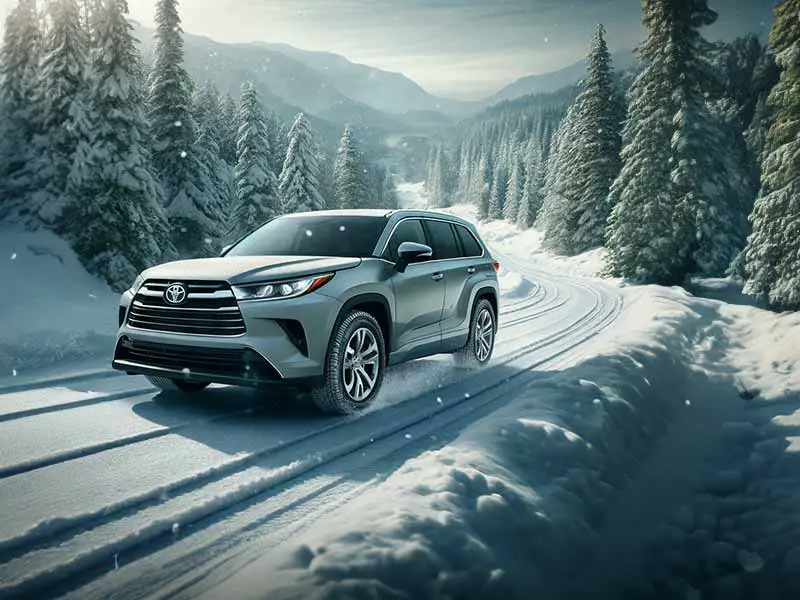
Understanding All-Weather Tires
All-weather tires are designed to be a hybrid between winter and all-season tires, offering a versatile solution that performs well in a variety of conditions including dry, wet, and snowy roads. These tires are constructed with a unique tread rubber that remains flexible at lower temperatures for winter capability while still providing sufficient dry and wet road traction in summer conditions. They typically carry the 3-Peak Mountain Snowflake symbol, indicating that they meet required performance criteria in snow testing and are considered suitable for somewhat heavier snow conditions, unlike regular all-season tires.
Capabilities of All-Weather Tires
- Versatility: They are engineered to handle diverse weather conditions. Whether it’s rain, sleet, light snow, or sunny days, all-weather tires are designed to perform reliably.
- Winter Performance: All-weather tires offer improved traction in winter conditions compared to all-season tires. Their tread design and compound are tailored to function well in cold weather, providing better grip on snowy or icy roads.
- Convenience: These tires eliminate the need for seasonal tire changes, making them a convenient choice for people living in regions with mild to moderate winter conditions. This can save time and reduce the costs associated with swapping and storing tires seasonally.
- Longevity and Durability: While offering a blend of features from both all-season and winter tires, all-weather tires are also built to last and provide a good balance of tread life and performance.
Limitations of All-Weather Tires
- Extreme Winter Conditions: Although all-weather tires are suitable for light to moderate snow conditions, they are not equivalent to specialized winter tires in handling severe ice and heavy snow. Their compromise in design to provide year-round usability means they cannot match the performance of dedicated snow tires in harsh winter conditions.
- Optimal Summer Performance: While all-weather tires perform adequately in summer conditions, they do not offer the same level of dry and wet traction or the same handling capabilities as specialized summer tires. Drivers looking for high performance in hot, dry conditions might find all-weather tires a compromise.
- Tread Wear: Due to their softer compound and flexibility to handle cold temperatures, all-weather tires might wear faster than all-season tires in hot climates or under aggressive driving conditions. This can affect their longevity and cost-effectiveness over time.
Resources
Below are some links you may find helpful when learning about tires:
- Are All-Season or All-Weather Tires Okay in the Snow? – Les Schwab
- Max performance summer consumer ratings – Tire Rack
Final Thoughts
Finding the best all-weather tire doesn’t have to mean breaking the bank—nor does it mean settling for low quality. Each of our six top picks brings something unique to the table.
If you want the highest level of traction, tread life, and comfort, you may lean toward premium choices like the Michelin CrossClimate2 or the Pirelli Scorpion WeatherActive. These deliver top-notch handling in wet, dry, and mild winter conditions, but come at a higher cost.
Mid-range options such as the Vredestein Quatrac Pro+ and the Cooper Endeavor Plus balance dependable performance with a friendlier price tag. They may not excel in extreme climates, yet they’re well-suited for everyday driving, offering solid grip and comfort for most conditions.
On the budget end, the Riken Raptor HR and Kumho Crugen HP71 prove that affordability doesn’t rule out reliable traction. These lower-cost picks handle daily commutes in moderate weather well, though they’re not as refined or long-lasting as pricier tires.
In the end, it’s all about matching your tire choice to what matters most: price, performance, comfort, or durability. By weighing these factors and considering the roads you drive most, you can confidently select the tire that keeps you and your family safe while fitting your budget.
Good luck and happy motoring.

